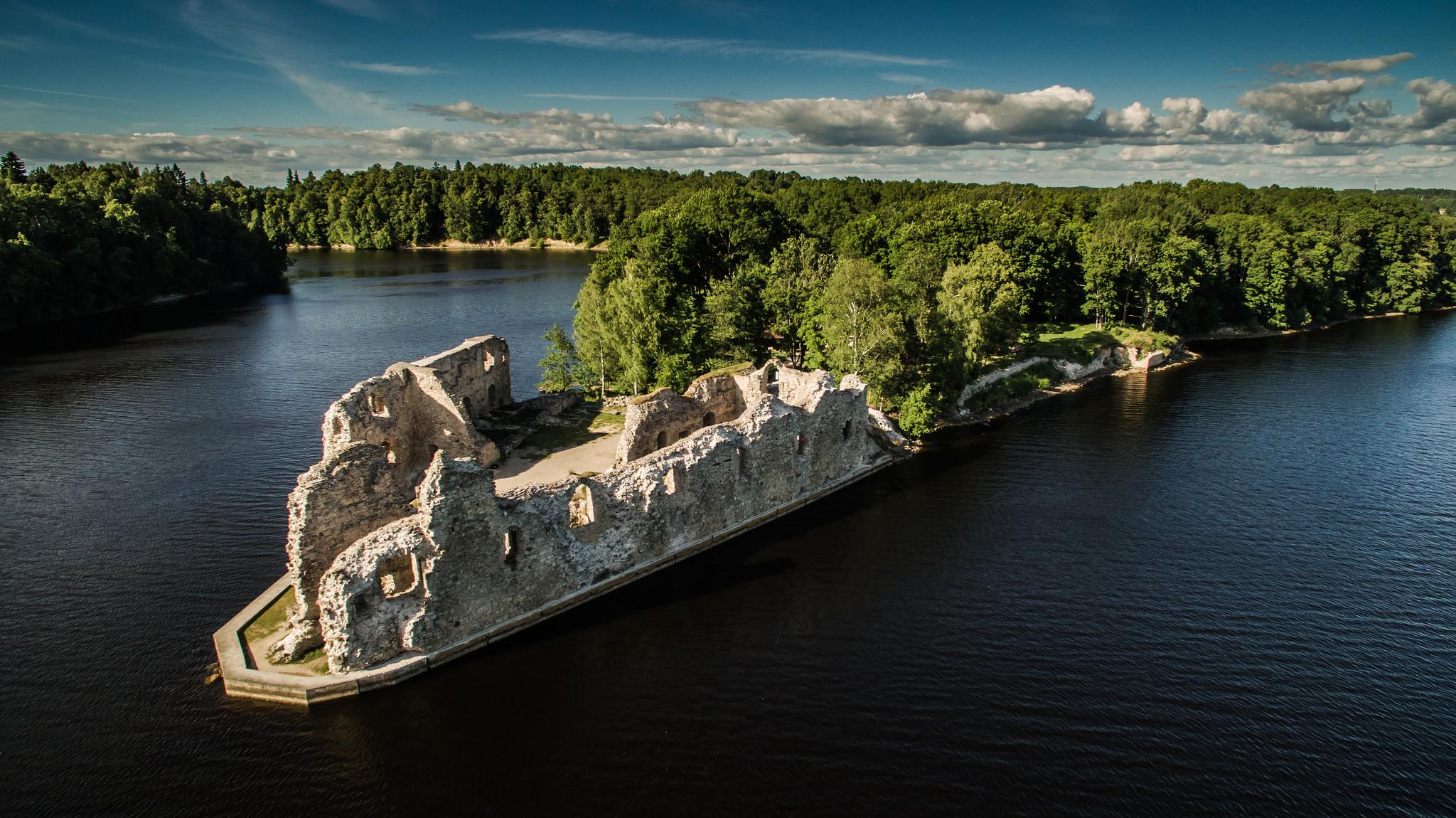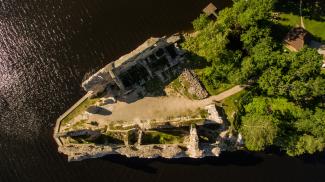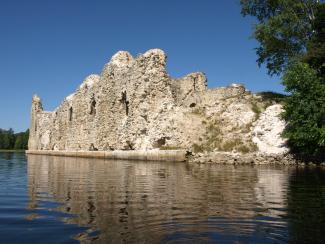Once upon a time, Koknese Castle stood majestically on a hill where the Perse River flows into the Daugava. Nowadays, after the construction of the hydroelectric power plant, water washes against the walls of its ruins.
To revive the fame and glory of old, theatrical performances, concerts, coin minting events, Medieval-style and traditional Latvian wedding ceremonies are held at the ruins, and the Catfish Waking Festival has become a new tradition at this site.
Ruins:
- Mint a Medieval-style coin,
- Join the Hanseatic Roads expedition,
- Learn a new game, play, dance or a song,
- Take a trip on the Vīgante boat,
- Take a walk in the park,
- Go on a guided tour of the castle ruins.
Find out the history of the castle ruins and Koknese at a pavilion next to the entrance.
History of the castle
In 1209, Bishop Albert built the stone castle to replace a former wooden castle that had been built by Latvians. In 1701, during the Great Northern War, Saxon cannon fire blew the castle up while withdrawing from the territory. Since that time the castle has survived as ruins. Until 1966 the castle ruins stood high on a hill, but its foundations were submerged into the rivers of Daugava and Perse after the Pļaviņas hydroelectric power plant was built on the Daugava.
Location and sights nearby









